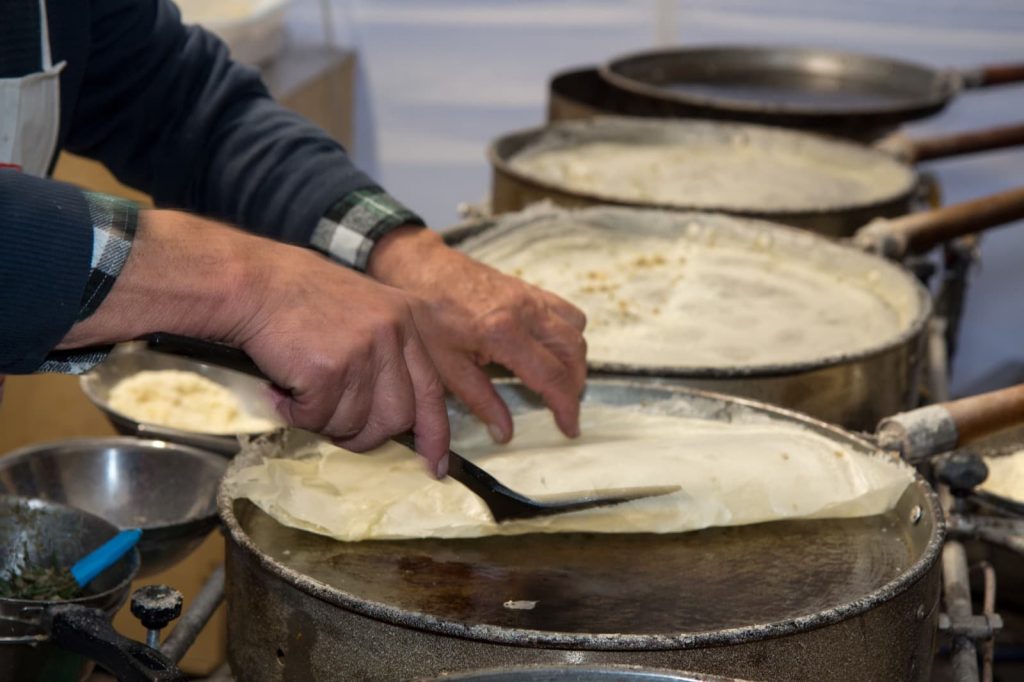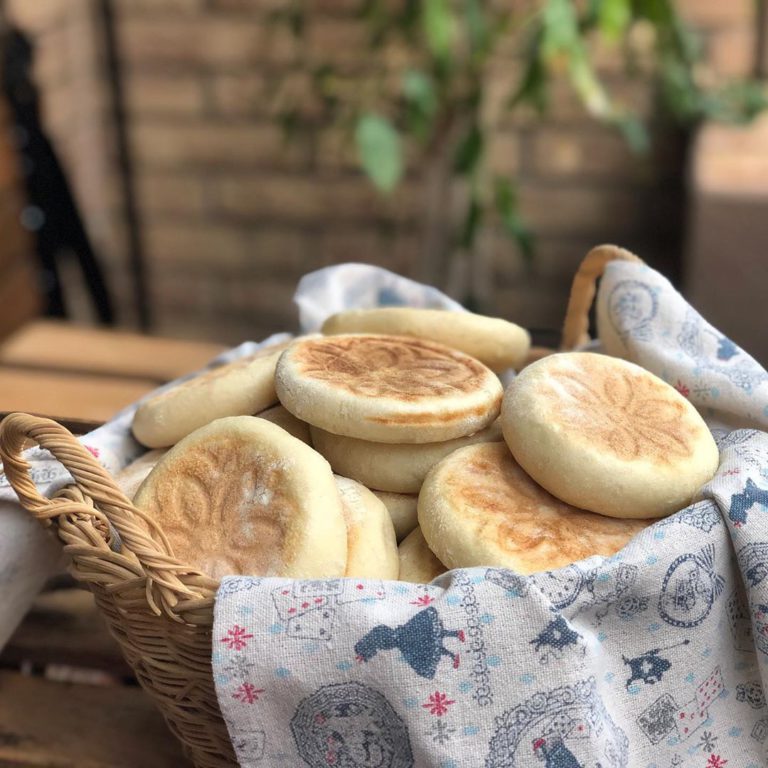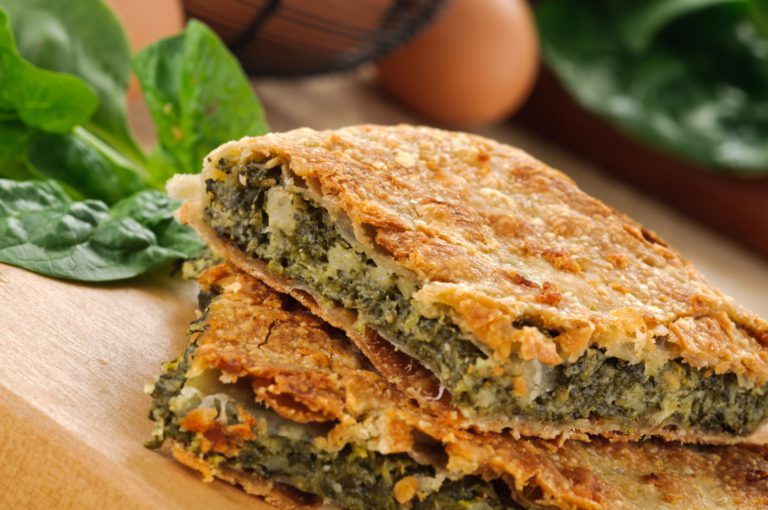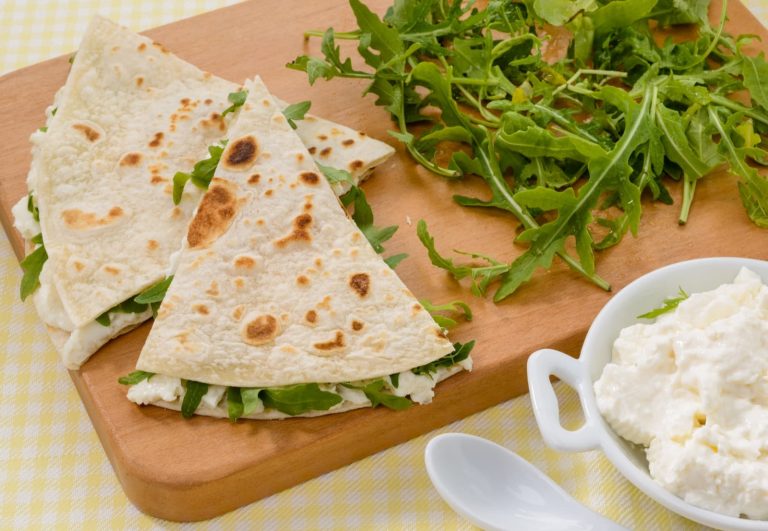Borlenghi are a typical recipe of the Modena and Bologna Apennines; borlenghi are produced – together with crescentine, with which they share the traditional filling – in the area between the municipalities of Vignola, Marano sul Panaro, Guiglia, Castello di Serravalle, Savigno, Zocca, Castel d’Aiano e Pavullo nel Frignano.
It is a very light and crispy pastry, we can define it as a very thin and crumbly crêpes; it is a “poor” dish that comes from the peasant tradition.
The basic dough, known as colla, is made from flour, water and salt (the addition of an egg is optional).
The filling, called cunza, consists of minced lard, garlic and rosemary (the famous pesto of the Modenese mountains) and a sprinkling of grated Parmigiano Reggiano cheese.
The borlengo is then folded in quarters and eaten.

The history
The history of this dish dates back to ancient times and, as with many traditional dishes, many localities dispute the primacy of its birth.
In Vignola, it is said to have been prepared for the first time in 1396, when the troops of the condottiero Giovanni Conte da Barbiano besieged the castle ruled by Iacopino Rangoni.
According to other sources, however, borlengo would have been born in Guiglia over a century earlier, in 1266, during the siege that Ugolino suffered by the Algani family army.
The origin of the name would also derive from this episode. It is said that Ugolino and the Grasolfi family managed to resist the siege for a long time “thanks to certain cooked doughs of flour and water, flavoured with herbs, resembling large wafers”. As days went by and flour became scarce, these wafers became thinner and thinner, almost transparent, so much so that they were no longer considered a food, but a joke, a burla, hence the word burlengo.
There are also those who maintain, with a similar story but in a different context, that the dish was created by someone who, wanting to make a burla, diluted the bread dough with too much water, thus giving rise to one of the most popular dishes of our Apennines.
According to others, finally, the name would derive from the word burla, but to indicate the Carnival period in which they were traditionally prepared.
The recipe

INGREDIENTS FOR THE COLLA:
250 g 00 Flour
1 l Water
1 pinch of Salt
INGREDIENTS FOR THE CUNZA:
80 g of Lard
1 clove of Garlic
1 sprig of Rosemary
50 g Parmigiano Reggiano cheese
PROCEDIMENTO:
Place the flour in a bowl and gradually add the water, stirring with a kitchen whisk to prevent lumps forming; cover and leave outside the fridge for at least an hour.
Remember that the consistency of the mixture should be very liquid.
Cut the lard into chunks and whisk with the peeled garlic clove and rosemary needles until smooth.
Grease a large non-stick frying pan and pour in a small amount of the colla to form a thin layer; cook until the edges begin to rise, then turn and cook for a few more moments.
When cooked, spread a layer of cunza and sprinkle with plenty of Parmigiano Reggiano cheese, then fold into quarters and enjoy.
Author

Elisa Mazzini
Social Media Manager for @inEmiliaRomagna and full-time mom.
You may also like
History and recipe of the traditional Erbazzone of Reggio Emilia
by Elisa Mazzini /// April 8, 2024
Back to the origins of Piadina, Romagna’s best street food
by Walter Manni /// March 20, 2019

Interested in our newsletter?
Every first of the month, an email (in Italian) with selected contents and upcoming events.


